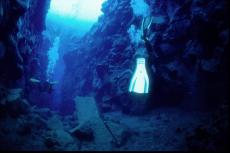Microplastics discovered in tissues of dolphins and whales
Recent research led by graduate student Greg Merrill Jr. at Duke University Marine Lab has uncovered a concerning prevalence of microplastics in the tissues of marine mammals.
The study, set to be published in the October 15th issue of Environmental Pollution, has provided evidence that microscopic plastic particles, which were discovered in the fats and lungs of around two-thirds of the marine mammals investigated, are not confined to the digestive tracts of these creatures but can migrate and embed themselves in their vital tissues.
Between 2000 and 2021, samples from 32 stranded or subsistence-harvested marine mammals in Alaska, California, and North Carolina were examined in this study. These samples were taken from twelve different species, including a bearded seal.
Microplastics, minuscule plastic particles ranging from 198 to 537 microns in size (for reference, a human hair is 100 microns in diameter), were found in various tissues, including fats, lungs, and other essential organs. Plastics are lipophilic (attracted to fats), so they can readily accumulate in blubber, the sound-producing melon on toothed whales' foreheads, and the fat pads along the lower jaw that direct sound to their internal ears. This raises concerns about potential harm to the animals' health.
Merrill emphasized the added burden that microplastics pose to marine mammals already facing numerous challenges such as climate change, pollution, and noise pollution. He stated, “Some proportion of their mass is now plastic.”
The study found that polyester fibers, commonly produced by laundry machines, and polyethylene, a component of beverage containers, were the most frequently identified types of plastics in the tissues. Blue plastic emerged as the predominant color in all four types of tissues examined.
Impacts
Merrill highlighted the need to investigate the metabolic impact of these embedded plastics on marine mammals. His forthcoming research will involve toxicology tests using cell lines grown from biopsied whale tissues.
This issue has broader implications as well. A 2022 study published in Nature Communications estimated that filter-feeding blue whales might ingest up to 95 pounds of plastic waste per day, given the high concentration of microplastics in their feeding grounds. Furthermore, whales and dolphins that prey on fish and larger organisms could accumulate plastic through their diet.
Merrill emphasized the urgency of addressing this problem, stating, “For me, this just underscores the ubiquity of ocean plastics and the scale of this problem.” The study's samples, dating back to 2001, indicate that this issue has persisted for at least two decades.
The research received support from various organizations, including the National Science Foundation, North Carolina Wildlife Federation and North Carolina Sea Grant.


























